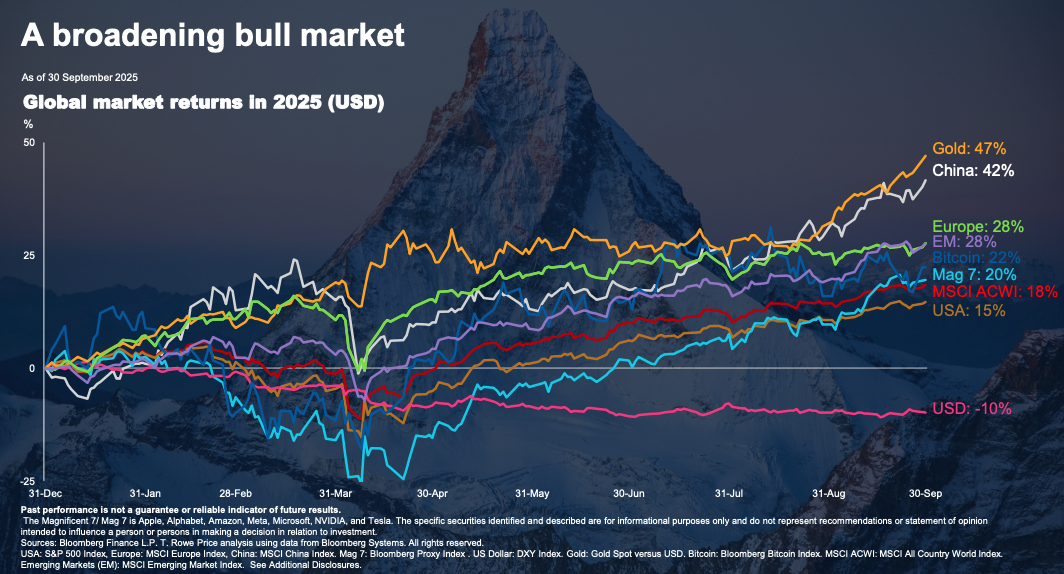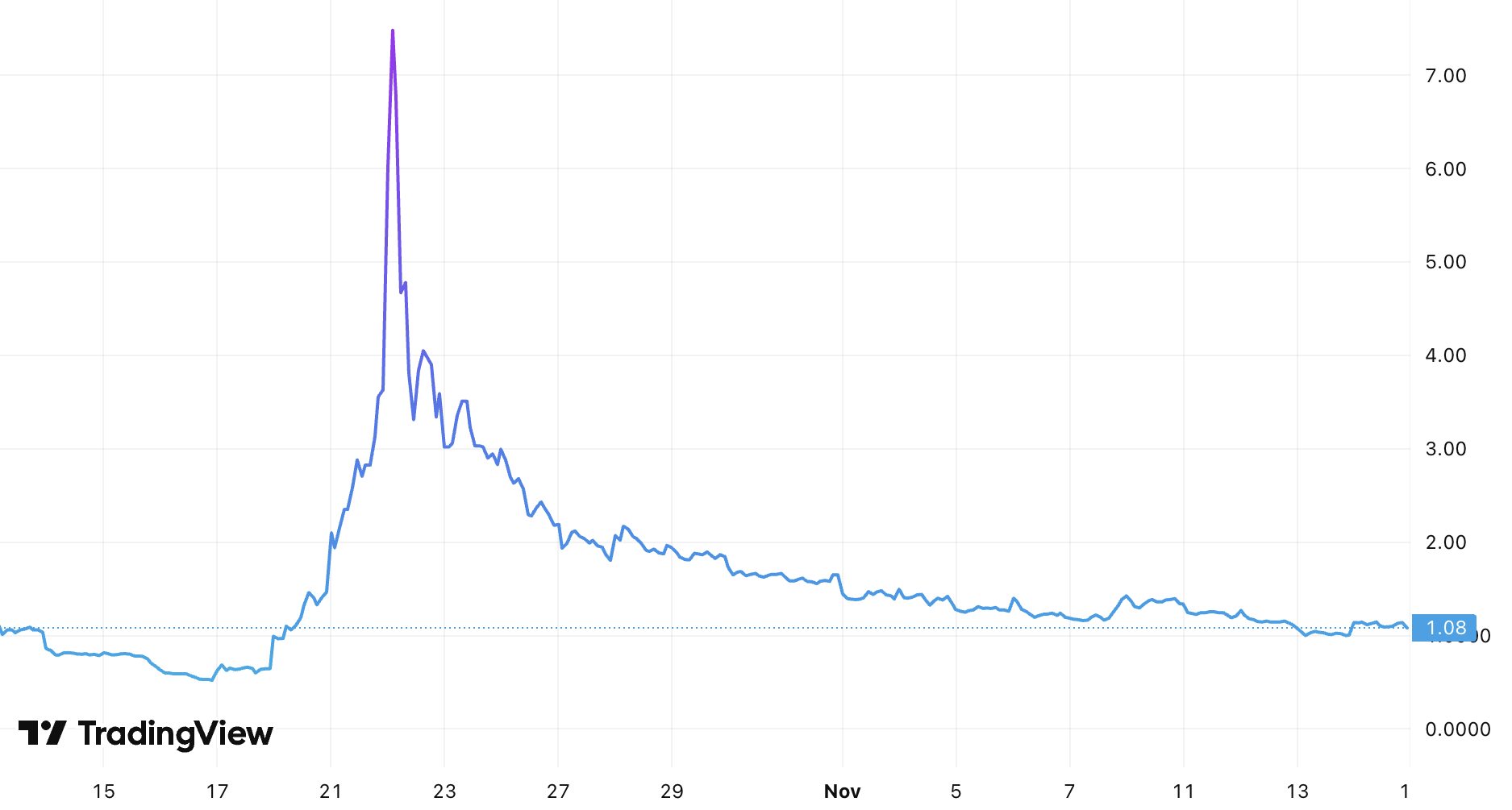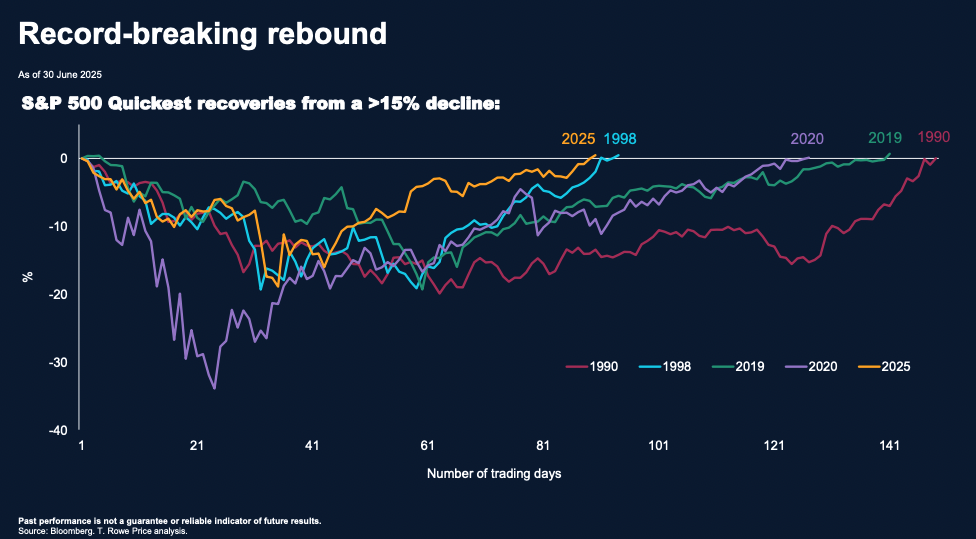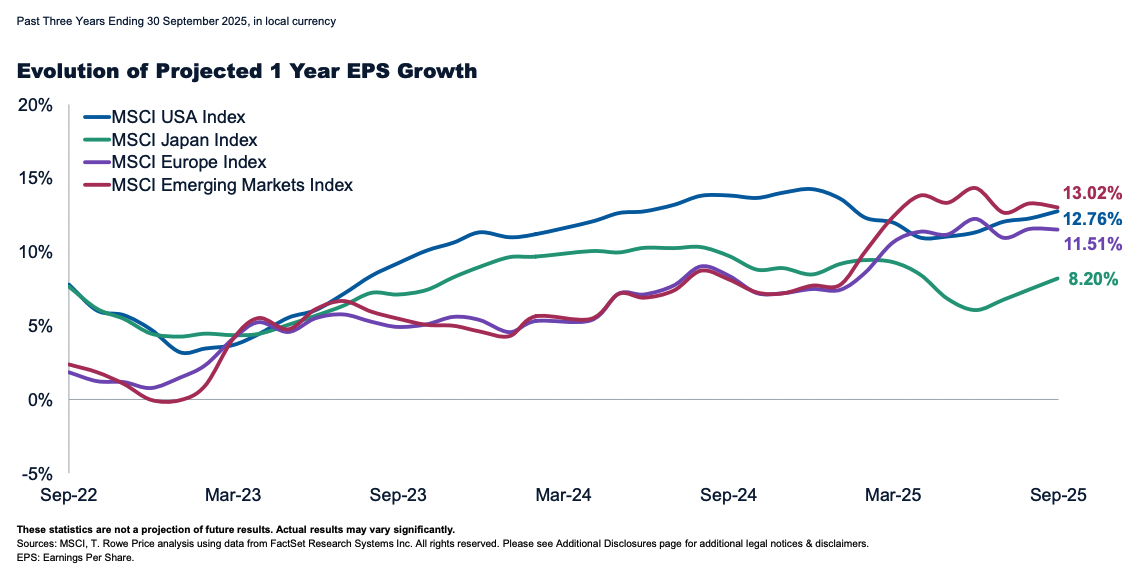T. Rowe Price's Scott Berg: Yes we're in a bubble, no you shouldn't sell
The word "bubble" invokes the need for immediate action. By their very nature, bubbles are precarious and fleeting and the temptation is to do something before it's too late.
But, as the old maxim goes, markets can remain irrational longer than you can stay solvent.
T. Rowe Price global equities portfolio manager Scott Berg is explicitly calling the current market a bubble, but he's also keen to stress that now isn't the time for radical action, even as the world feels increasingly tumultuous.
"I don’t think the bubble’s going to pop imminently."
A world of profound change
According to Berg, there are five key dimensions driving markets - Trump 2.0, AI, the economy and corporate earnings, the Fed and rates, and escalating geopolitics.
On Trump, Berg suggests investors are still underestimating the president's genuine policy intentions. Whilst investors have been quick to downplay Trump’s policies, we believe this misrepresents his cast-iron commitment to actually remoulding global trade.
Markets may have shrugged off tariffs, but that doesn't overcome the reality that an effective 18% tariff rate is currently being collected on all goods coming into the US every day, says Berg.

"It wasn't an empty threat. It's a profound change to global trade to have something that looks like a global GST."
On AI, Berg is adamant that it's currently in a market bubble, but that the technology itself is not a bubble.
"AI technology will change all your lives, your children's lives, the world, just like electricity did or just like the internet did," says Berg. "The internet was not a bubble as a technology."
Even still, he's not calling the top on AI and tech stocks.
"I'm going to disagree that it is time to be out of tech and the bubble's about to blow right now," he said. "I think the bubble is less likely to pop immediately."
Why we're definitely in a bubble
There are myriad data points and indicators that show we're currently in a stock market bubble, says Berg.
One major indicator is simply that almost all markets and asset classes are showing strong performance, despite the profound political and economic changes unfolding around the world.

We are effectively in an "everything" bull market, ultimately fuelled by leverage and liquidity.
"This is what happens in bubbles," said Berg.
"As long as you own a house or you own commodities, doesn't matter if it's gold or silver or uranium, whether you own stocks, wherever in the world, whether it's China, whether it's Europe, whether it's the US, you're getting richer."
It's also the nature of the investments that are outperforming that shows further evidence of a bubble. "Meme stocks" and profitless tech are far out-pacing other assets.

He recalls the quote from Benjamin Graham, economist and mentor to Warren Buffett, who suggested stock markets are "voting machines" in the short term, where investors chase narratives, and "weighing machines" in the long term, where investors look to fundamentals.
He points to the shift during the 2022 correction when hyped tech stocks went from being called "innovation companies" to "profitless tech" as an example of the shift from voting machine to weighing machine. We're now back in the voting machine part of the cycle, says Berg.
Berg highlights the recent example of Beyond Meat (NASDAQ: BYND), which pumped 800% in a single day before crashing again.

"That is what happens in bubbles," says Berg. "You get liquidity chasing risk, and it's like a casino."
A different example comes at the other end of the tech spectrum in the form of Palantir (NASDAQ: PLTR), a profitable and successful company that is trading at extreme valuations.
It was recently trading at 100 times revenue, making it one of only a handful of stocks to ever do so, according to Berg. All of the others occurred during the 90s and Covid bubbles.
Another indicator has been the speed of the equities recovery following Trump's Liberation Day earlier this year. It was the quickest the S&P 500 has recovered from a 15% drop since the 1980s, taking a mere 85 days to regain its previous level.

Berg points out that the two other quickest recoveries occurred in 1998 and 2020, both on the way up in a bubble that then popped a few years later.
Ultimately, it's also how investor expectations have shifted that shows we're in a bubble, says Berg.
"We've delivered 20% annualised return for three years. We've delivered a 17.5% return the year through September. And people are disappointed with that."
"That's the first little 'ding, ding, ding', when you all think 20% annualised for three years is disappointing. That should be a little warning sign because in all of history, 20% for three years is very rare."
How to navigate the bubble
So while Berg is adamant we're already in a bubble, he believes there's still plenty to play out before it bursts.
Earnings growth looks strong across the global economy, and EPS growth is even showing good breadth across both growth and value stocks.

The US Fed is also cutting rates, which suggests the bubble has further to go.
"Bubbles at their heart are fuelled by leverage and money chasing risk, and rate cuts fuel that. More rate cuts fuel bubbles. It's not where bubbles die."
So while the temptation may be to get out while the going remains good, Berg says “leaving the party early can be just as bad as not going."
During the Dot-com bubble, more than half the total returns came in the last year of the bull market. Exiting the market early meant missing out on the majority of the returns.

Key to navigating the bubble is looking out for signposts around what could cause the bubble to pop. Berg highlighted a multi-dimensional framework he uses to monitor a potential pop by watching key indicators.
These include; watching for Federal Reserve interest rate hikes, weakening macroeconomic prints suggesting a slowdown, developments in technology (such as setbacks with new chips or AI models like ChatGPT), geopolitical risks (for example, rare earth export bans or major escalations in conflicts), the level of leverage fuelling the bubble, and whether underlying business models can consistently meet high expectations.
This wide-ranging framework helps guide Berg’s portfolio positioning by helping identify early warning signs about when a bubble might pop and being ready for the downside.
Ultimately, bubbles are a "game of two halves", says Berg. "The first half is about offence and you need to stay invested to get a good absolute return."
The second half is about defence once the bubble starts bursting. "Where you get your relative outperformance in a bubble is outperforming on the way down," says Berg.
Investors and fund managers who might be beating the pack now at the halfway point could still end up underperforming by the time the rest of the race is run.
It's the classic story of the tortoise and the hare, and it's where the best active managers truly earn their stripes, says Berg.
"The history of the world is get rich slow and steady works, get rich fast doesn't."
When you find yourself in a bubble, it can pay to be more tortoise than hare.
4 topics
2 stocks mentioned
2 contributors mentioned

